Fermenting Fundamentals
Jan 27, 2019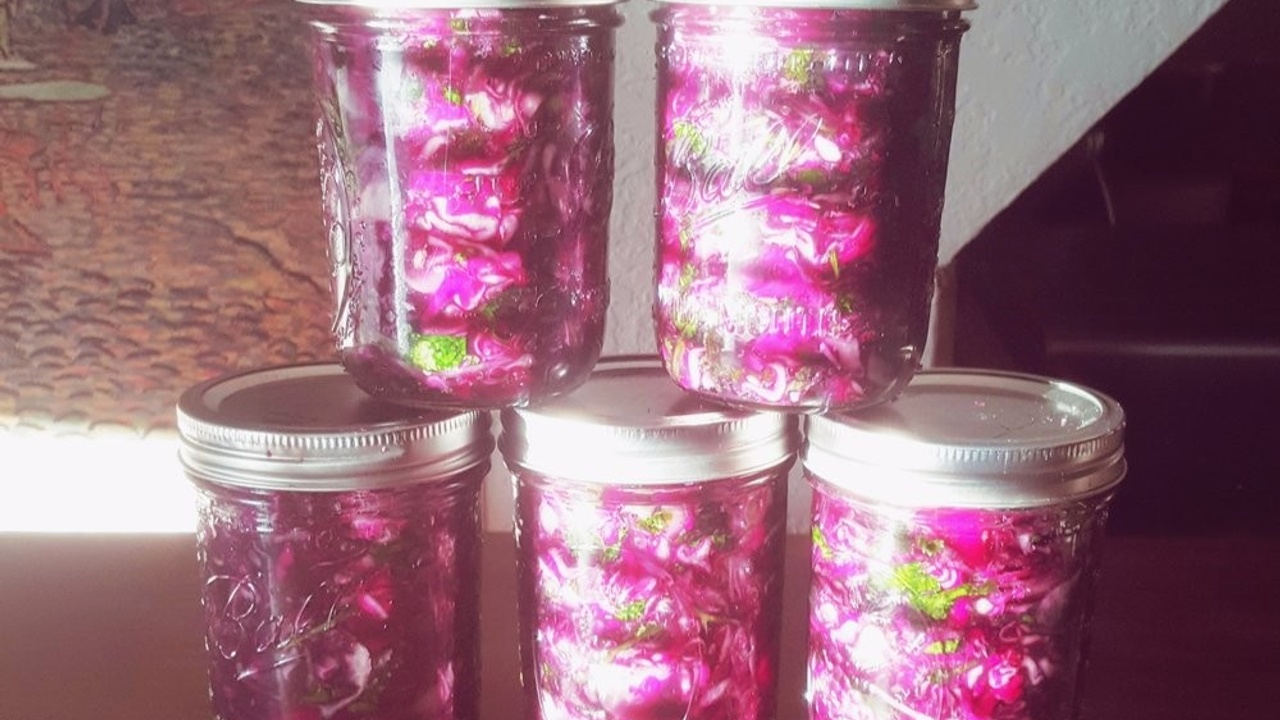
Well, friends, we have arrived …
... at one of my absolute favorite topics of conversation ever ever!! I never thought anything would get me so excited to talk about. I especially never thought it would be microbes and eating them! Haha oh well, life is funny that way I suppose!
Sooo…. What exactly is up with fermenting?
What is all the hype?
Why do we do it?
What’s happening in those jars during the whole process?
Am I really going to be eating … microbes?
How much of a difference does it really make?
(So much to say about all of this!!!)
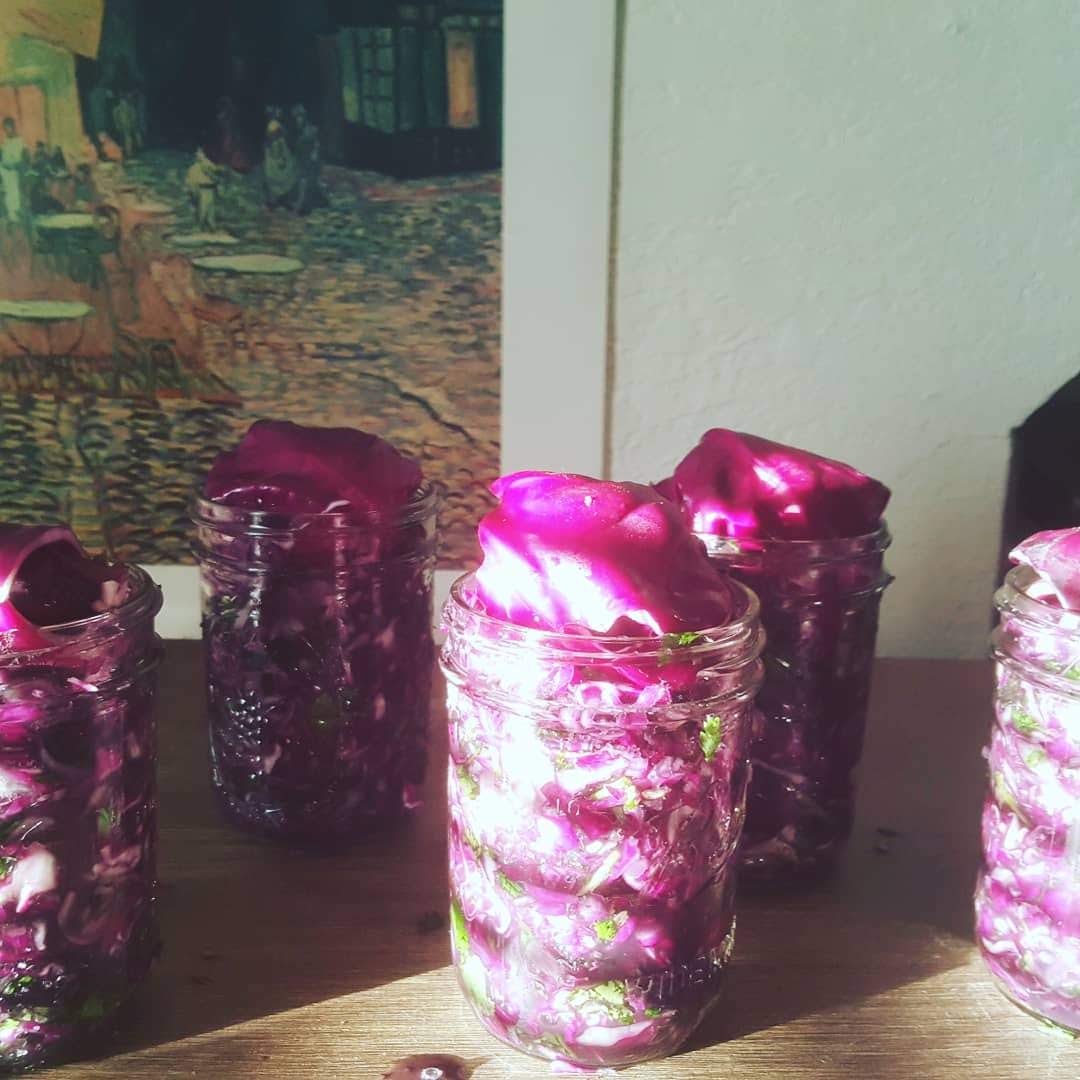
I’ve been following Donna Gates and The Body Ecology team for years now. This is where I learned much of this information about bacteria, gut ecology, the process by which our health improves from eating probiotic rich foods (like cultured veggies), and how to make these veggies at home. Please check them out www.bodyecology.com if you want to learn more about this.
Also I absolutely love the teachings by Dr. Weston A. Price and closely follow many of the nutritional principles outlined on the Weston A Price Foundation website. It's all about traditional ways of preparing and sourcing food, with an emphasis on the most nutrient dense foods in our world. I highly recommend reading this article here on the importance and history of lacto-fermented foods in our ancestors diet.
To keep it simple, fermentation is the process of breaking down glucose (sugar) in an anaerobic environment. Anaerobic = no oxygen. The type of fermentation I’ll be talking about in this post is lactic acid fermentation, though there are other kinds out there (probably the kind we are most familiar with is ethyl alcohol fermentation which makes our pinots and our IPAs) that are also super cool and we can delve into that another time. The process of fermentation does some pretty spectacular things to our veggies.
One – they “predigest” the veggies.
The bacteria that are found on our hands, on the veggies, in our kitchens, on the knife we use to cut said veggies, on our counter tops, in the culture starter kit (if you’re using one), go to town on the sugars naturally found in the veggies, and they start to gobble them up so they can proliferate and make a lots of baby bacteria (nice visual, eh?). These beneficial bacteria have converted all the sugars into lactic acid –a job that your body’s digestive enzymes have to do any way! So boom – predigested veggies.
What does this mean?
This means that if you are someone who has weak digestion or needs their digestion optimized, this important step is already done for you by the bacteria! How sweet of them, right?!
Two – they enhance our immunity!
We recently learned that most of our immune system is contained in our guts (like 80%, whoa!), so the bacteria, when we feed our bodies with fermented foods, are able to colonize our intestines and communicate directly with the immune system! We also recently learned that some neurotransmitters are made in our guts, so when these bacteria are setting up camp in our intestines, they can help improve some symptoms usually associated with the brain like brain fog, depression, moodiness, etc. Who knew that the brain was influenced so much by the gut?! Maybe that’s why they call it the “second brain”…
Three – this is maybe the coolest thing about bacteria guys … they prevent the overgrowth of pathogenic bacteria, or the bad guys.
This I learned from the great Catalina Martone, otherwise known as Healthy Gut Girl. She has an absolutely amazing podcast called “Stuff Your Doctor Should Know” where she teaches all about … well… stuff your doctor should know! Haha! Her early podcasts about fermenting and culturing veggies talk about this concept called “competitive inhibition” meaning that when you have the right proportion of good bacteria to bad bacteria, even if there are several million bad guys floating around in there, the good guys will outnumber the bad guys and never let them overgrow and harm your perfect amazing intestinal tract. HOW COOL IS THAT??!!
Approximately 80% of your gut bacteria is the good kind, 10% is the bad kind, and the other 10% is the meh I don’t know what I am kind of bacteria. They neither harm us nor help us. But when you have enough happy bacteria in the large intestine, they keep the bad guys in check.
There’s so much more to say about this, but lets leave it at that for now. I honestly am constantly amazed at how intelligent these little single-celled microorganisms are.
They literally know how to keep us healthy, create vitamins and minerals, chelate certain toxins, make foods more nutrient dense, enhance our immunity, keep our bowels regular, etc, … WITHOUT HAVING A BRAIN.
They exist purely so that we can thrive in this one and only amazing life we have!! Mull that over for a second. How does that make you feel??!! Makes me want to do everything I possibly can to keep them healthy, thriving, and well fed :)
So how do we make these incredible veggies? It’s so simple. And so fun. Grab a friend, your Boo, your kids, your sister, and get to fermenting!!
There are so many combos of veggies you can do! The possibilities are literally unlimited, and there are no rules! Use the two recipes below for a jumping off point to getting creative with your own recipes! The two listed below are favorites of mine because they are so easy to do, have simple ingredients, don't take too long to prep, and the end result is a crunchy, tangy delight that makes any dish they are added to so snappy and delicious!
Basic Fermented Veggie Recipes
PURPLE VARIETY
2 heads of purple cabbage (save 6-8 whole cabbage leaves for the end if doing the jar method)
1 bunch purple kale
5-6 shallots
1 bunch parsley, roughly chopped
1 bunch cilantro, roughly chopped
2 TBS fennel seeds
GREEN VARIETY
2 heads green cabbage (save 6-8 whole cabbage leaves for the end if doing the jar method)
1 large yellow onion
1 bunch of parsley, roughly chopped
4-5 garlic cloves
1-2 TBS caraway seeds
Directions:
Pull out your food processor. Make sure you have one of those dooders with the blade that sits on top of the spinner. It’ll give you that nice shredded cabbage, not the sliced diced chopped look (you can do it that way, but the consistency will turn out weird and a little like baby food … eeshk. If you don’t have that extra blade, just slice your cabbage super thin with a knife).
Put all of the ingredients through the food processor, except the parsley and cilantro which are already roughly chopped and ready to go.
Combine all of the chopped/shredded veggies into a big bowl.
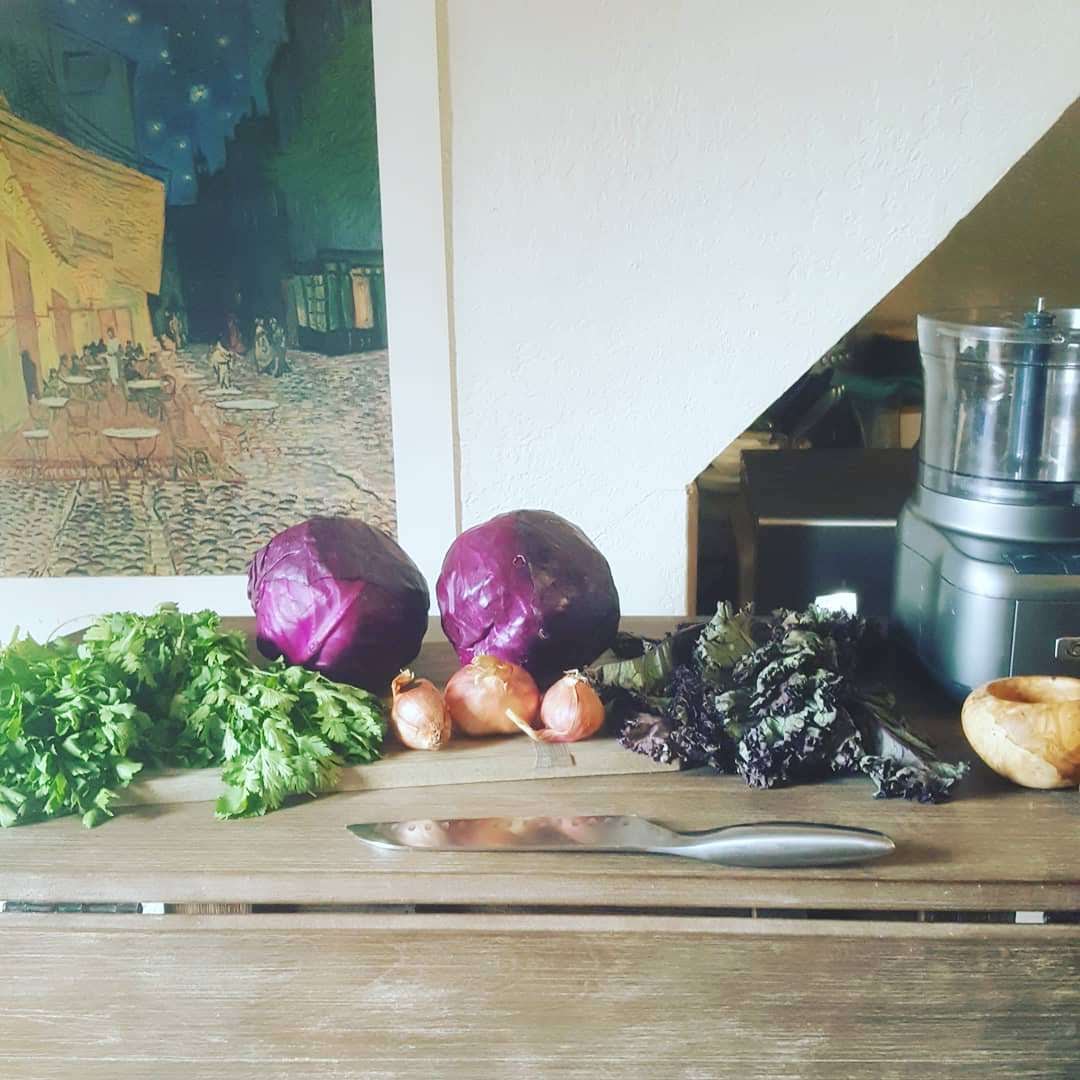
(This next step is extra, not exactly necessary to making a batch of fermented veggies, but its quite powerful and a great way to make your veggies even more bacteria-rich.)
Grab your culture starter kit. I use Body Ecology’s “Culture Starter” because they contain hearty strains of beneficial bacteria which make these veggies super potent and powerful. Body Ecology suggests you make a brine with the culture starter, where you take a few cups of your chopped veggies, throw them in your blender, add some purified water, and blend til you have a soupy consistency. Then add your culture starter to the brine. Then pour that brine all over the veggies in the bowl and get to massaging!
**if you don’t have a culture starter kit, that’s okay. Add several ample pinches of good quality sea salt to the bowl of veggies and start massaging. The salt and mechanical breakdown of the veggie cell walls will naturally release the water content from inside the veggies and a brine will naturally happen when you massage enough. Again, bacteria naturally exists on the veggies and your hands, so those will be the little guys that gobble up the sugars and make bacteria babies.**
Get your hands all up in those veggies, massaging them, working them, covering them all in the juicy brine you just added. The bacteria on your hands, from the culture starter, and from the veggies have a heyday gobbling up the sugars and proliferating.
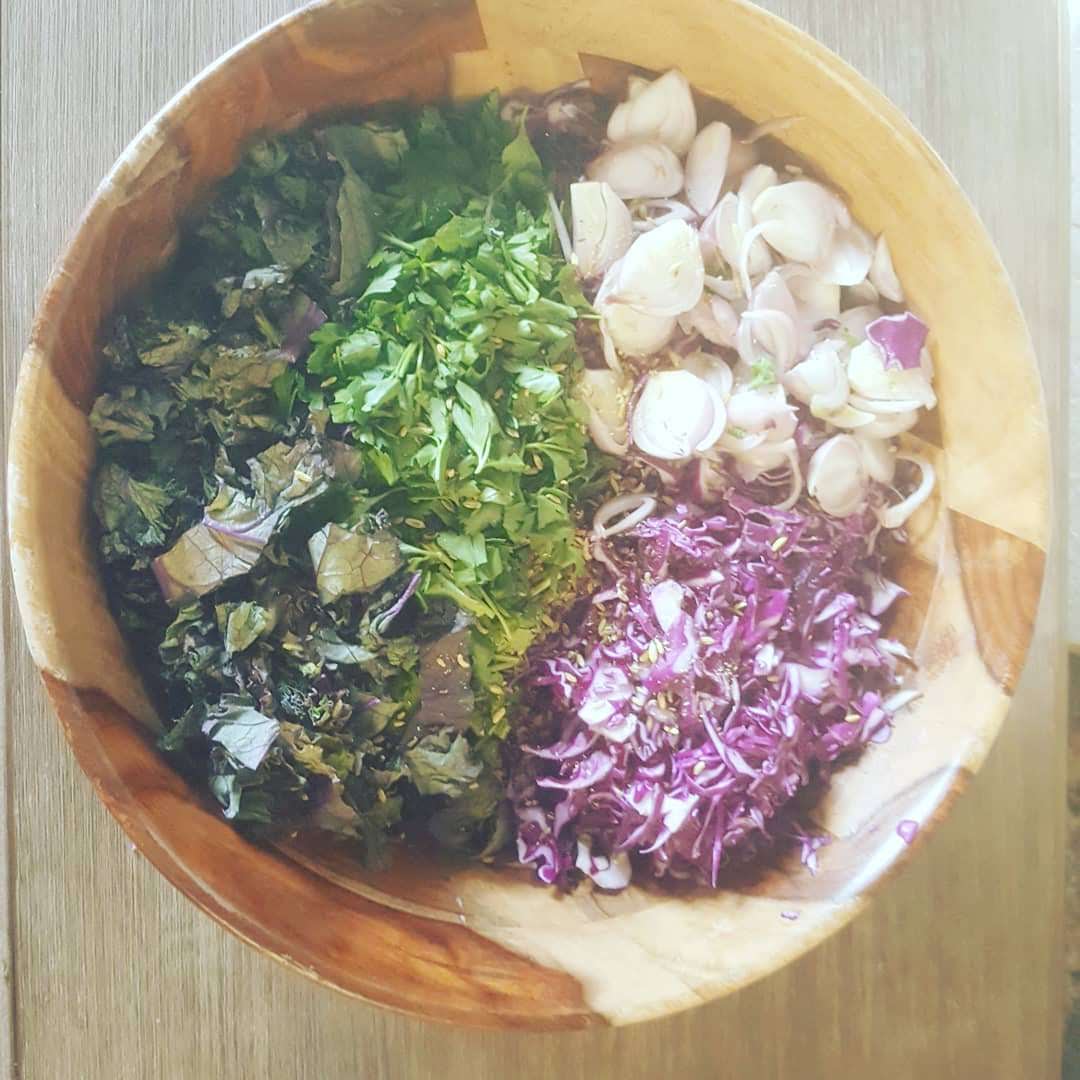
After you’ve massaged for awhile and all the veggies are coated with the brine/juices and/or salt, you’re ready to jar or crock your veggies.
Now for packing your veggies:::
There are 2 methods to choose from; the crock method and the jar method. I have done both and prefer the crock method, personally.
CROCK METHOD
1) After you have thoroughly massaged your veggies, transfer them from the mixing bowl into the crock.
2) Push the veggies down and pack them tightly together.
3) After you have transferred all the veggies into the crock, lay the weights on top of the veggies, one at a time.
4) Take the wooden tamper and press down on the weights to pack the veggies even tighter. The liquid should come up and cover the veggies completely.
5) Place the lid on the crock and set it on your kitchen counter.
6) Add a bit of water to the lip of the crock AFTER you have put the lid on. This ensures a seal so that air can escape, but no air can get in.
7) Let the veggies sit in the crock on your counter top for at least 21 days. The longer you leave them, the more fermented they will become. Remember that things ferment quicker in warmer seasons, and more slowly in the colder months.**
8) Make sure to check the water level around the lip of the crock every day, and refill as needed to ensure the seal.
JAR METHOD
After you have thoroughly massaged your veggies, transfer them from the mixing bowl into individual mason jars.
2) Pack the veggies into the mason jars, leaving about 1 inch of space at the top so that the veggies can expand.
3) Push the veggies down and pack them tightly together, as if you are attempting to push all of the air out of the jars. The liquid should cover the veggies entirely.
4) Roll up several reserved cabbage leaves into tight "logs" and fit them into the top of each jar to fill the space.
5) Screw on the lids.
6) Set the jars in a Pyrex casserole dish or some other container on your kitchen counter (in case any liquid escapes the jars) *
7) Let the veggies sit in the jars for at least 21 days. Remember the longer you leave them, the more fermented they will become. Remember that things ferment quicker in warmer seasons, and more slowly in the colder months.**
8) When your veggies are ready, discard the rolled up cabbage leaf.
*When I first started making cultured veggies, I didn’t know about the leakage that happens during fermentation with the jar method, and allllllll the juices got all over the kitchen and it was very stinky and kind of scared my roommates at the time … save yourself a mess!!
**Depending on the time of year you are doing this and the temperature of your house, you may need more or less time. The veggies like room temperature, or 70 degrees. If it’s warmer where you are, you will need less time. If it’s colder, then obviously you’ll need longer. The jars will make these funny noises and get all bubbly and start to get a little tangy smelling. This is all good and normal!! Those bacteria are proliferating and making babies and eating up all the beauty in those jars.
If using the crock method, transfer the veggies to mason jars when they are done fermenting and refrigerate. When you put them in the fridge, the fermentation process slows but does not stop. And don’t worry if you don’t eat them right away, they have a very long shelf life in your fridge –longer than 6 months!!
And now, ENJOY!! Add a scoop of these veggies to your raw salad, as a side dish with lunch and dinner, or pile them on your eggs and avocado in the morning for breakfast. I love them in all these ways! One of my favorite ways to enjoy them are as a “slaw” on my tacos or in a taco bowl. They are so crunchy and delicious and bring so much flavor to a boring ole salad.
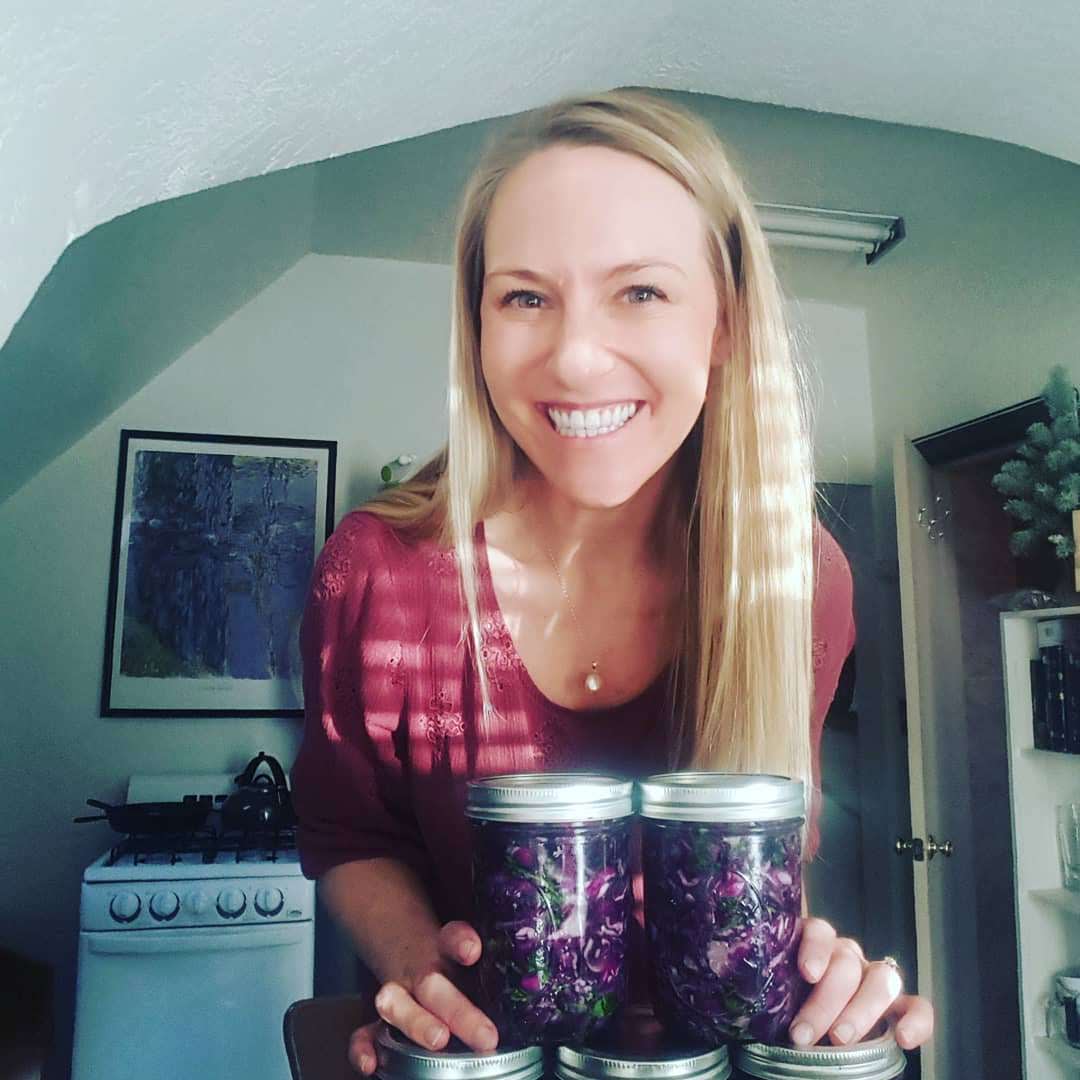
Would LOVE to hear how your fermenting adventures go! Leave a comment and let me know how things are going! Always here for questions too!
HAPPY FERMENTING!!!!
xoxo,
Emily :)


